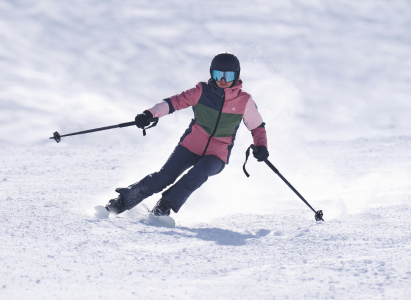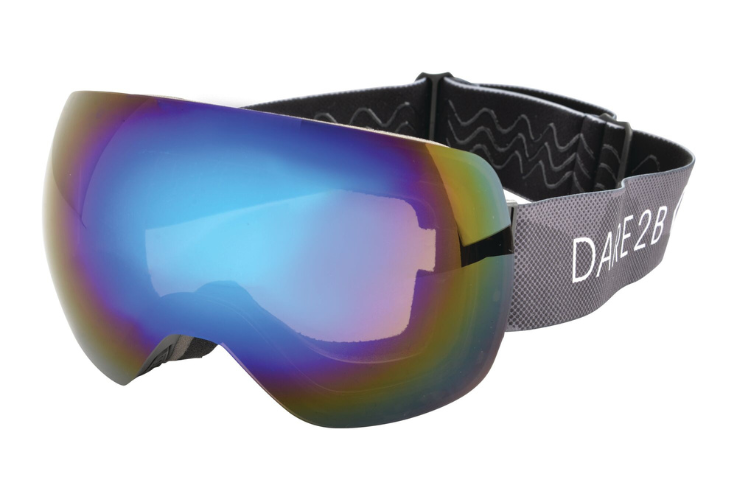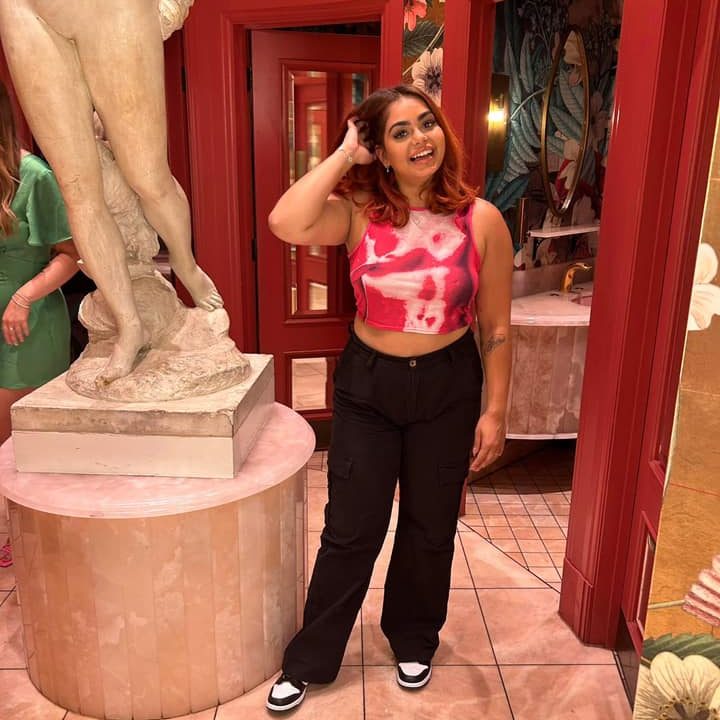
When you're on the slopes and at higher altitudes, the air around you is thinner and in turn filters out less UV rays. As well as effecting your skin, this can also have an impact on your eyes and how well you can see. Having a well fitting ski goggles can help stop your eyes watering and blurring and it will also stop any snow, ice or debri from getting in and irritating them. All in all, wearing goggles can help make your ski trip more enjoyable.
If you're unsure about what to look for when it comes to ski goggles, we've created this guide to help. We're going to talk through the different features, fits and what to look for when purchasing your next pair.
Different Styles of Ski Goggles and How They Should Fit
There are two main styles of goggle lenses; cylindrical and spherical.
Spherical lenses curve across your face/eyes, but they also curve vertically, so in-between your nose and forehead. Cylindrical lenses curve around your face and eyes however vertically they are flat. Cylindrical lenses come at a better price point, however the flatness of the lens can end up causes more glare whereas the spherical lens goggles are pricer but give better peripheral vision and less glare.
Once you've chosen which style of lenses you want for your ski goggles, it's time to check if the fit of those goggles are right. This first thing to make sure about is whether your goggles fit comfortably with your helmet. All goggles are made to be compatible with all helmets, but it's worth double checking that your goggles and helmets have a good fit. Most goggles are also adjustable, so play around with the clips to make sure you feel comfortable with them.
Once you've fitted the ski goggles around your helmet correctly, they should fit your face without any discomfort. You're looking for a snug, not tight fit. You want frames that have a little bit of flexibility into them and some movement, avoid any ski goggle frames that feel too rigid. The frames have padding around the rim, which should stop the goggles from pinching your face. You want the foam to be thick enough to be comfortable without being overly thick as that can cause fogging.
If you're someone who wears prescription glasses, there are actually ski goggles that have been made specifically to fit over glass, they're aptly known as Over The Glass (OTG) styles. They've been created to have extra space which means they fit over your glasses without adding pressure onto the bridge and temples.
How to Avoid Your Lenses Fogging Up
We've briefly mentioned fogging as an issue above, and it's something that can be really annoying whilst you're on the slopes trying to focus as it can impair your vision. Fogging happens when the warm air coming from your body meets the cold slope air and creates condensation which then beads up on the lenses. There are some key ski goggle features that you can look for to help avoid fogging. These features include double layered lenses, anti fog coatings, fans and vents.
Double layered lenses tend to come as standard now, the seal between the two creates a thermal barrier that has a higher resistance to fogging.
Most ski goggles (anything above the most basic styles) also come with an anti fog coating as standard, but you're also able to purchase anti fog products to use on older goggles or goggles that have their coating wear away through usage.
Vents and fans both work in the same way, it brings in cold or cooler air to help reduce the amount of condensation that is produced. Vents allow for better airflow, however since it's allowing the outside air in, that air is going to be very cold which can inturn make your face cold. These battery operated fans create their own cool air, and can be adjustable so they don't need to be blowing the same amount of air all the time. However, ski goggles with inbuilt fans are definitely on the pricier end of the budget.
What is Visible Light Transmission?
Another phrase you may have seen when researching into ski goggles is visible light transmission or VLT. The colour of your ski lens can affect how much light reaches your eyes, and that amount of light is called the visible light transmission.
Clear lenses shouldn't be used for any day time skiing as they don't offer any protection, they're made for night skiing.
Lenses with a lighter tint have a higher level of VLT as the amount of light that can pass through is higher than that of a darker lens. So lenses that are tinted yellow, gold/rose gold, amber or even green, is the one to choose if your planning on skiing on cloudy or slightly duller days.
Anything with a darker tint (browns, darker greens, coppers or grey) allow less light in, which make them ideal for sunnier slope days. Any day that you would normally think to wear standard sun glasses, is the type of day you would need to wear ski goggles with a dark tint.
The general rule of thumb when it comes to lens tints would be the brighter the day is, the darker the tint needs to be on the goggles.
Other Key Ski Goggle Features
There are some other key features that you could look for when ski goggle shopping -
- UV Protection - this is another feature that tends to come as standard across all goggles. Even when it looks cloudy, harmful UV rays are still breaking through so it's important to protect your eyes.
- Polarised lenses - the polarising tint's main job is to help reduce any glare that comes from the light bouncing up from the snow or any water.
- Mirrored lenses - this style of coating helps to reflect more light away, which in turn gives it a lower VLT as it lets less light in.
- Digital displays - if you're looking at the top end of ski goggles, they come with a small digital display that can connect to your phone. You can use it as a GPS whilst you're out on the slopes.

The Velose II Ski Goggles has been created to be suitable for most light conditions. The double lens not only provide protection from UVA and UVB sunlight, it's also finished with an anti fog coating that will help increase visibility. It has a seamless integration with our ski helmets and is also available in Black.

The Verto Ski Goggles gives you a higher level of visual clarity thanks to the horizontal and vertical shape. It comes with interchangeable lenses that are magnetic and both had an anti fog coating applied to them. The air vent cut outs along the temple allow for extra ventilation and they protect against harmful UV rays as standard. Don't forget to complete your ski accessories with one of our ski helmets. All of the ski goggles we create are made to fit with our helmets.
Ski goggles are a key part of your ski wardrobe, they will help protect your eyes from both UV rays and environmental factors. You can shop the rest of our ski accessories, that includes your ski helmet, ski gloves and mitts, neck warmers and more. You can shop all of our ski wear here.
